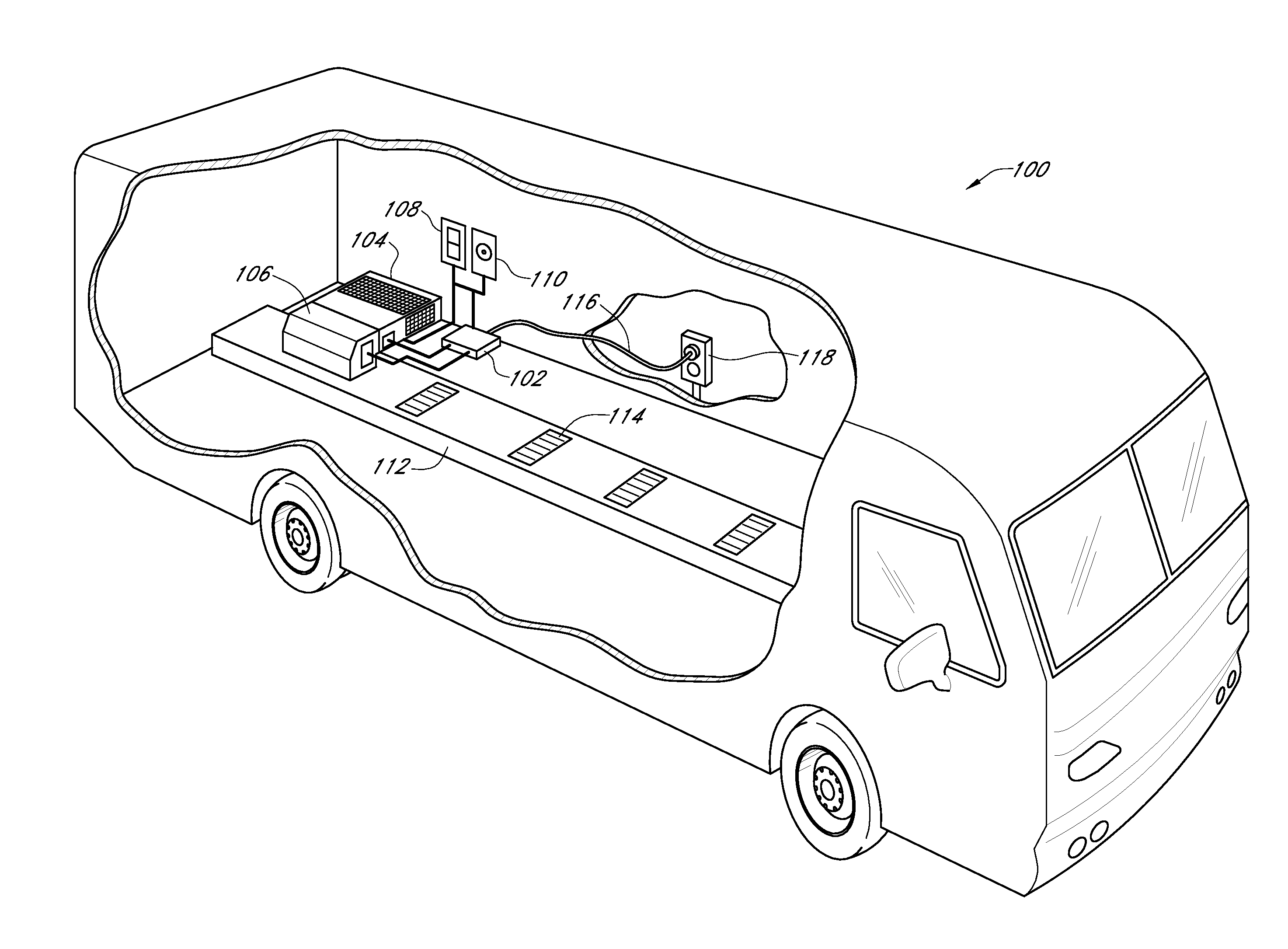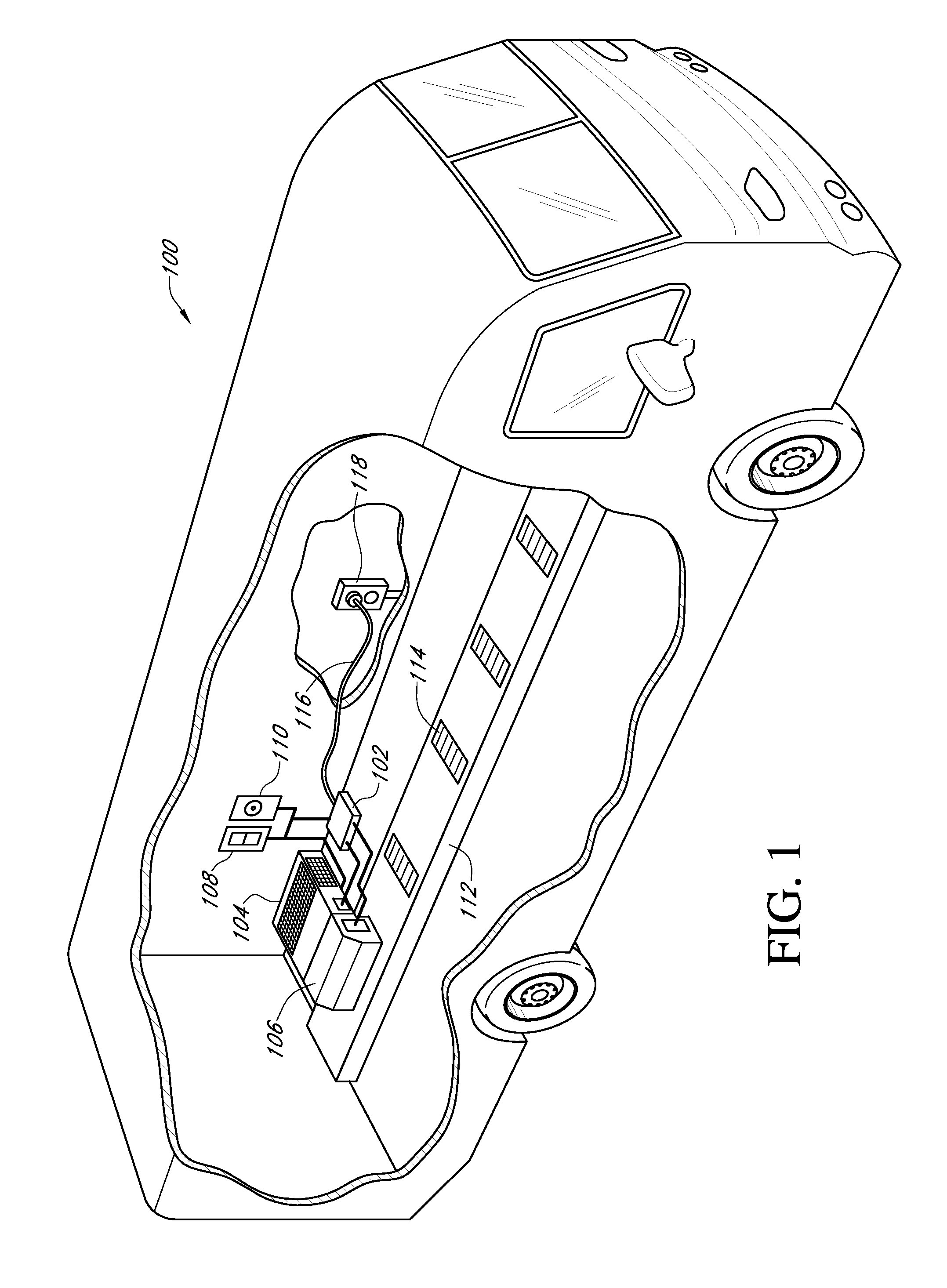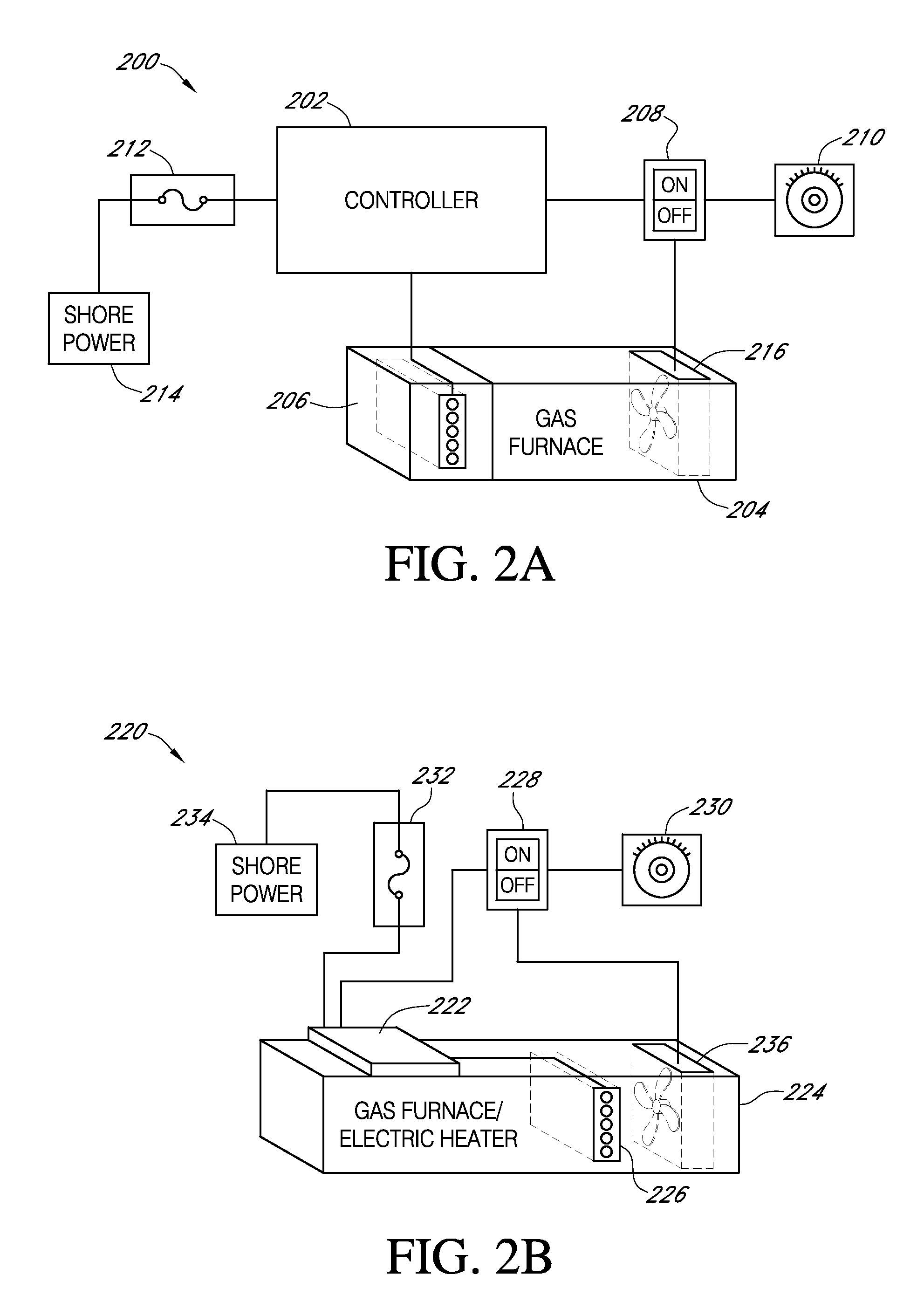Systems and methods for controlling an adaptive heating system with exchangeable heat sources
- Summary
- Abstract
- Description
- Claims
- Application Information
AI Technical Summary
Benefits of technology
Problems solved by technology
Method used
Image
Examples
Embodiment Construction
[0040]In accordance with an exemplary embodiment of the present invention, FIG. 1 illustrates an adaptive heating system connected to the ventilation system of a mobile residence 100. It should be understood that the term “mobile residence” is not limited only to recreational vehicles, as depicted in FIG. 1. Instead, the term mobile residence should be interpreted to include busses, vans, travel trailers, fifth wheelers, mobile homes, aircraft, watercraft, and the like. Any of these mobile residences may be adapted to comprise any of the heating systems and implement any of the methods associated with the present invention. In an embodiment, the mobile residence 100 includes an existing ventilation system 112 having a number of ventilation registers 114 distributed throughout the confined / enclosed area(s) of the mobile residence 100. As used herein, the term “register” generally refers to an adjustable, grill-like device through which heated or conditioned air may be released into a...
PUM
 Login to view more
Login to view more Abstract
Description
Claims
Application Information
 Login to view more
Login to view more - R&D Engineer
- R&D Manager
- IP Professional
- Industry Leading Data Capabilities
- Powerful AI technology
- Patent DNA Extraction
Browse by: Latest US Patents, China's latest patents, Technical Efficacy Thesaurus, Application Domain, Technology Topic.
© 2024 PatSnap. All rights reserved.Legal|Privacy policy|Modern Slavery Act Transparency Statement|Sitemap



